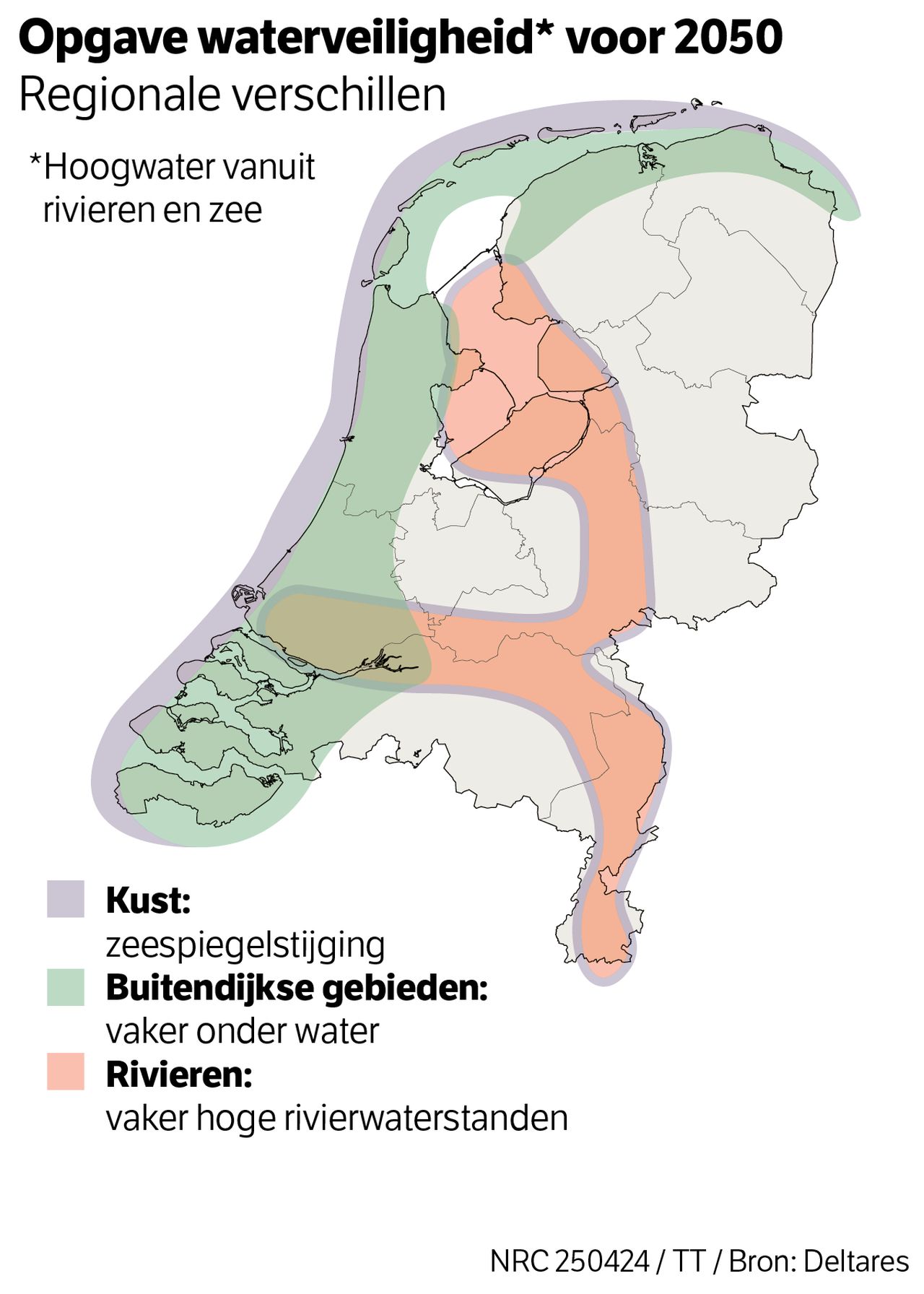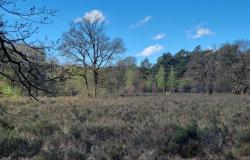It will become more difficult and complex to protect the Netherlands against flooding and to provide it with sufficient fresh water in the course of this century. That’s in the report Delta scenarios 2024which was published this Wednesday.
There are already areas that are experiencing shortages of fresh water or are at risk of flooding, the report states. These problems will only increase. And they stack up. Many areas will have to tackle a combination of problems: water shortage, flooding and water safety. According to the report, “structural bottlenecks are emerging on a regional and national scale.” Tackling the problems will “have a major impact on the physical environment.”
The growing problems are partly caused by climate change. The Netherlands will have wetter winters and drier summers. The salinization of coastal areas is increasing as a result of rising sea levels. More extreme weather will also occur more often – downpours in the summer and prolonged rainfall in the winter. In addition, the population and economy are growing. This, for example, increases the demand for drinking water.
The report was drawn up by the Deltares knowledge institute, on behalf of the staff of the Delta Commissioner and the Ministry of Infrastructure and Water Management. The Delta Commissioner advises the minister and is responsible for the National Delta Programme, which contains recommendations on how the Netherlands can be protected against flooding and ensure sufficient fresh water. The ministry finances these types of plans from the Delta Fund, 1.9 billion euros annually, for example the reinforcement of dikes. Based on the Delta scenarios, the program is updated every six years.

Low river levels
In the now published report, Deltares develops four possible scenarios for 2050 and 2100. These include variations in the degree of climate change, population growth, urbanization and economic growth.
For example, shipping is more affected by low river levels in one scenario than in the other. In one scenario more nature is added than in the other. But in each of the four scenarios, the problems of water shortages, flooding and water safety increase to a greater or lesser extent. In all areas of the Netherlands it causes “an accumulation of tasks”.
“Every region in the Netherlands faces its own problems,” says Renske de Winter of Deltares and one of the main authors of the report. “That is why there are no generic solutions. And the way in which one region tackles the problems also influences the tasks in other regions. That makes it complex.”
The most pressing problem is the availability of fresh water. As an example, Saskia van Vuuren, staff member of the Delta Commissioner, mentions the high sandy soils, which cover approximately half of the Dutch land area and can be found in Drenthe, Overijssel, Gelderland, Utrecht, North Brabant and Limburg. “Here you hardly have any water supply from large rivers,” she says. “The water that people need often comes from precipitation and from what is buffered in the groundwater.” Increasing periods of drought will quickly cause a water shortage. Low parts of the Netherlands also face this problem, but because of decreasing river discharges and increasing salinization. “It matters a lot where you are in the Netherlands,” says Van Vuuren.
Compared to the previous Delta scenarios, from 2017, there are clear differences, says De Winter. This time, the agreements from the Paris climate agreement have been included. If the goals set therein are achieved, the Dutch water task for 2100 will become much smaller. For example, the Delta scenarios now take into account increasing the level of surface water in ditches in peat areas. This level was kept low in a controlled manner, for agriculture and housing. But dry peat breaks down easily, causing the soil to sink and a lot of the greenhouse gas CO to be released2 is released. That is why the plan is to rewet the peat. This also requires extra water, the report states.
Rain shower like in 2021
Another difference with the previous scenarios is the attention paid to water shortages due to summer drought. This has been much clearer on the agenda since 2018, says Van Vuuren. Furthermore, the now published report also includes a number of ‘what-if developments’, events about which much is still uncertain, but which would have a major impact if they were to occur. Such as an extremely accelerated sea level rise. Or a rain shower like the one in 2021, which hit Limburg, the Eifel and the Ardennes. Such a “precipitation event” would cause billions in damage in South Holland. De Winter: “It is a kind of alertness that we want to give to the water world. These are developments that could come into play in the coming years.”
Also read
The Netherlands is still ‘safe and livable’ with a sea level rise of five meters

The report does not mention concrete solutions. Will agriculture still be possible everywhere? Should the Rhine water from the Pannerdensch Canal be distributed differently across the Netherlands? Should there be more water buffers, and where? “With the Delta scenarios we visualize possible futures,” says Van Vuuren. “How we deal with changes is the next step.” The current Delta Program will be recalibrated in 2026. “Then it will be examined for each region in the Netherlands which adjustments are possible. And what effect they have.”
Preferably, other major developments should also be taken into account, De Winter and Van Vuuren emphasize. Such as the energy and agricultural transition and the construction of new homes. De Winter: “If you build new houses, you don’t want the cellars to be flooded in 20 years.”
To share
Email the editor
Tags: Protecting Netherlands water increasingly difficult problems piling
-








